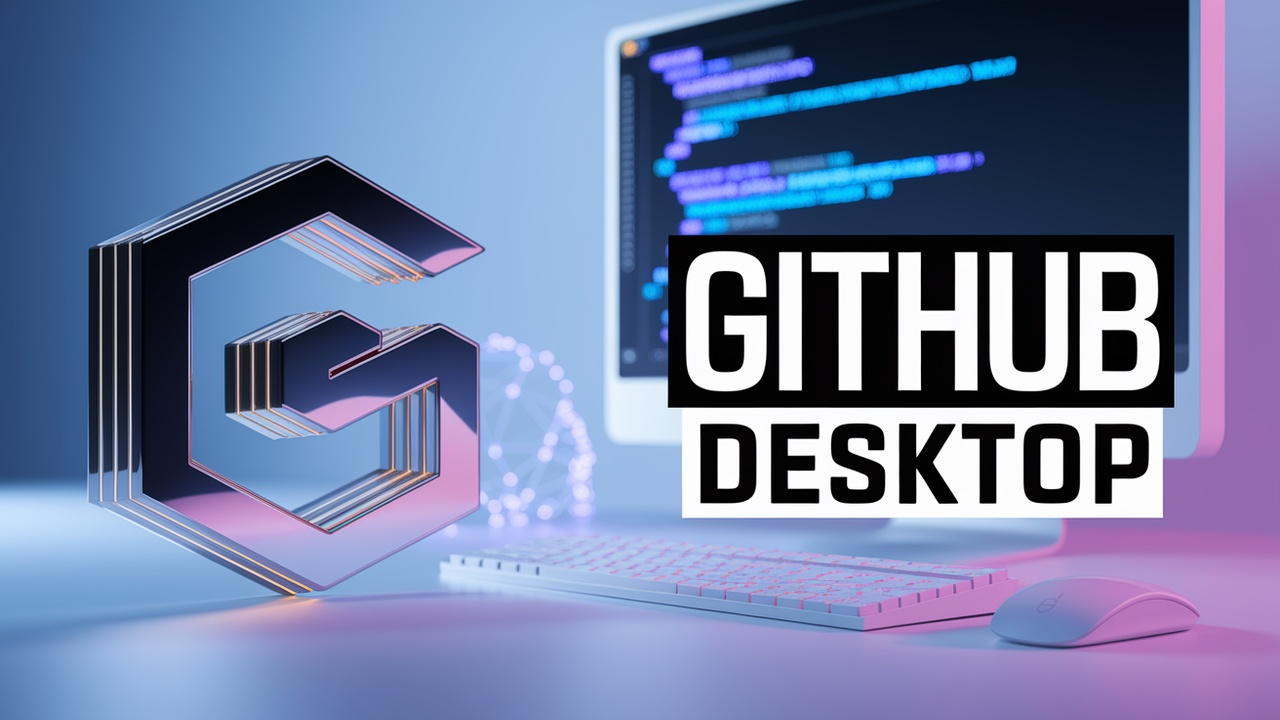
This course provides a comprehensive guide to using GitHub Desktop, a powerful tool for version control and collaboration in software development. You will learn everything from the basics of GitHub to advanced features that enhance your workflow, enabling you to manage your projects effectively.
Course Levels
-
Level 1: Introduction to GitHub Desktop
In this level, you will familiarize yourself with the GitHub Desktop interface and learn about its key features.
-
Level 2: Basic Git Operations
This level covers fundamental Git operations you can perform using GitHub Desktop.
-
Level 3: Collaborating with Teams
Learn how to collaborate effectively with others on GitHub using GitHub Desktop.
-
Level 4: Advanced Features
Explore advanced features of GitHub Desktop that enhance your development workflow.
-
Level 5: Best Practices and Troubleshooting
This final level covers best practices for using GitHub Desktop and troubleshooting common issues.
Course Topics
-
Installing GitHub Desktop
# Installing GitHub Desktop ## Introduction GitHub Desktop is a powerful application that provides a user-friendly interface for working with Git and GitHub. It allows developers to manage their rep...
-
Maintaining a Clean Repository
# Maintaining a Clean Repository Maintaining a clean repository is crucial for effective collaboration and project management in GitHub. A clean repository not only improves readability but also enha...
-
Utilizing the Command Line with GitHub Desktop
# Utilizing the Command Line with GitHub Desktop ## Introduction GitHub Desktop provides a user-friendly interface for Git version control and GitHub repositories. However, there are advanced feature...
-
Customizing Your Workflow
# Customizing Your Workflow In GitHub Desktop, customizing your workflow can significantly enhance your productivity and streamline your development process. This topic explores various ways to tailo...
-
Resources for Continuous Learning
# Resources for Continuous Learning in GitHub Desktop Continuous learning is vital in the ever-evolving landscape of software development and version control. GitHub Desktop is a powerful tool for ma...
-
Common Errors and Solutions
# Common Errors and Solutions in GitHub Desktop When using GitHub Desktop, users may encounter various common errors that can disrupt their workflow. This section will cover these errors, their cause...
-
Collaborating on Issues
# Collaborating on Issues Collaboration is a vital part of software development, especially when working in teams. GitHub provides a robust issues tracking system that allows teams to manage tasks, r...
-
Resolving Merge Conflicts
# Resolving Merge Conflicts Merge conflicts occur when two branches have changes in the same part of a file, and Git cannot automatically resolve which change to keep. Understanding how to resolve th...
-
Using GitHub Desktop with GitHub Actions
# Using GitHub Desktop with GitHub Actions ## Introduction GitHub Actions is a feature that allows you to automate workflows directly from your GitHub repository. With GitHub Desktop, you can manage ...
-
Managing Submodules
# Managing Submodules Managing submodules in Git is an essential skill for developers who work on projects that depend on other repositories. This topic will guide you through the concept of submodul...
-
Pull Requests Explained
# Understanding Pull Requests Pull Requests (PRs) are a pivotal feature in collaborative coding environments, especially when using GitHub. They allow developers to propose changes, review code, and ...
-
Syncing with Remote Repositories
# Syncing with Remote Repositories In this section, we will explore how to effectively sync your local repository with remote repositories using GitHub Desktop. This is a crucial skill for collaborat...
-
Cloning a Repository
# Cloning a Repository Cloning a repository is one of the fundamental operations in Git and GitHub, allowing you to create a local copy of a remote repository. This process not only lets you access t...
-
Effective Project Management with GitHub
# Effective Project Management with GitHub Managing projects effectively is crucial for the success of any software development initiative. GitHub, with its collaboration features and version control...
-
Understanding Repositories
# Understanding Repositories ## What is a Repository? A repository, often abbreviated as "repo," is a storage space where your project files reside. In the context of Git and GitHub, it not only cont...
-
Best Practices for Version Control
# Best Practices for Version Control Version control is an essential aspect of modern software development, enabling teams to collaborate effectively and maintain the integrity of the codebase. In th...
-
Navigating the Interface
# Navigating the Interface ## Introduction Understanding the interface of GitHub Desktop is crucial for effectively managing your repositories, making commits, and collaborating on projects. This to...
-
Creating Your First Repository
# Creating Your First Repository Creating a repository (or repo) is one of the fundamental steps in using GitHub Desktop. A repository is a storage space where your project files, including code, doc...
-
Reviewing Code Changes
# Reviewing Code Changes In collaborative software development, reviewing code changes is a critical practice that ensures code quality, maintains standards, and fosters team communication. This topi...
-
Viewing History and Changes
# Viewing History and Changes in GitHub Desktop Understanding the history of your project and the changes made over time is crucial when working with Git and GitHub. GitHub Desktop provides a user-fr...
- And 5 more topics...